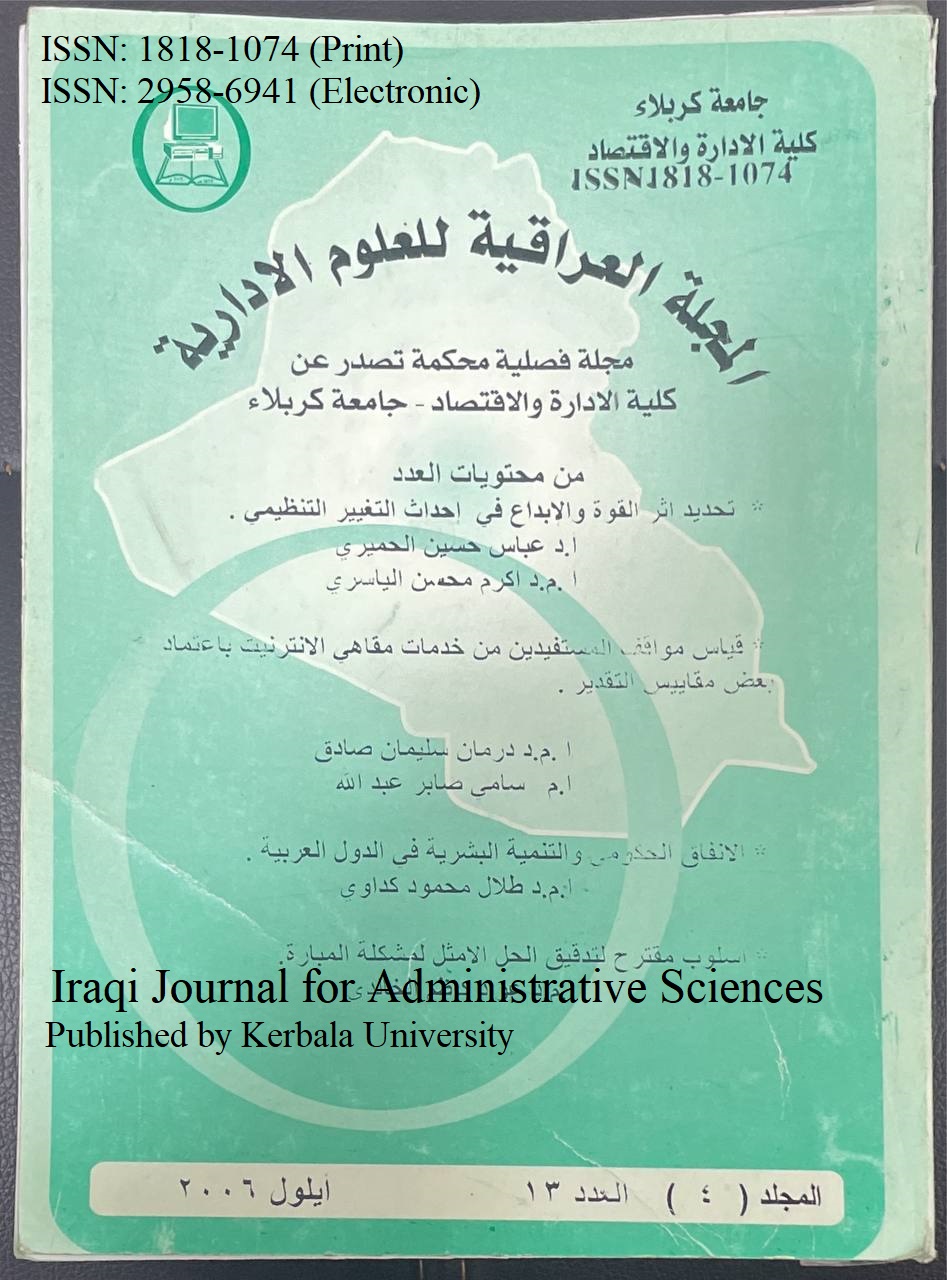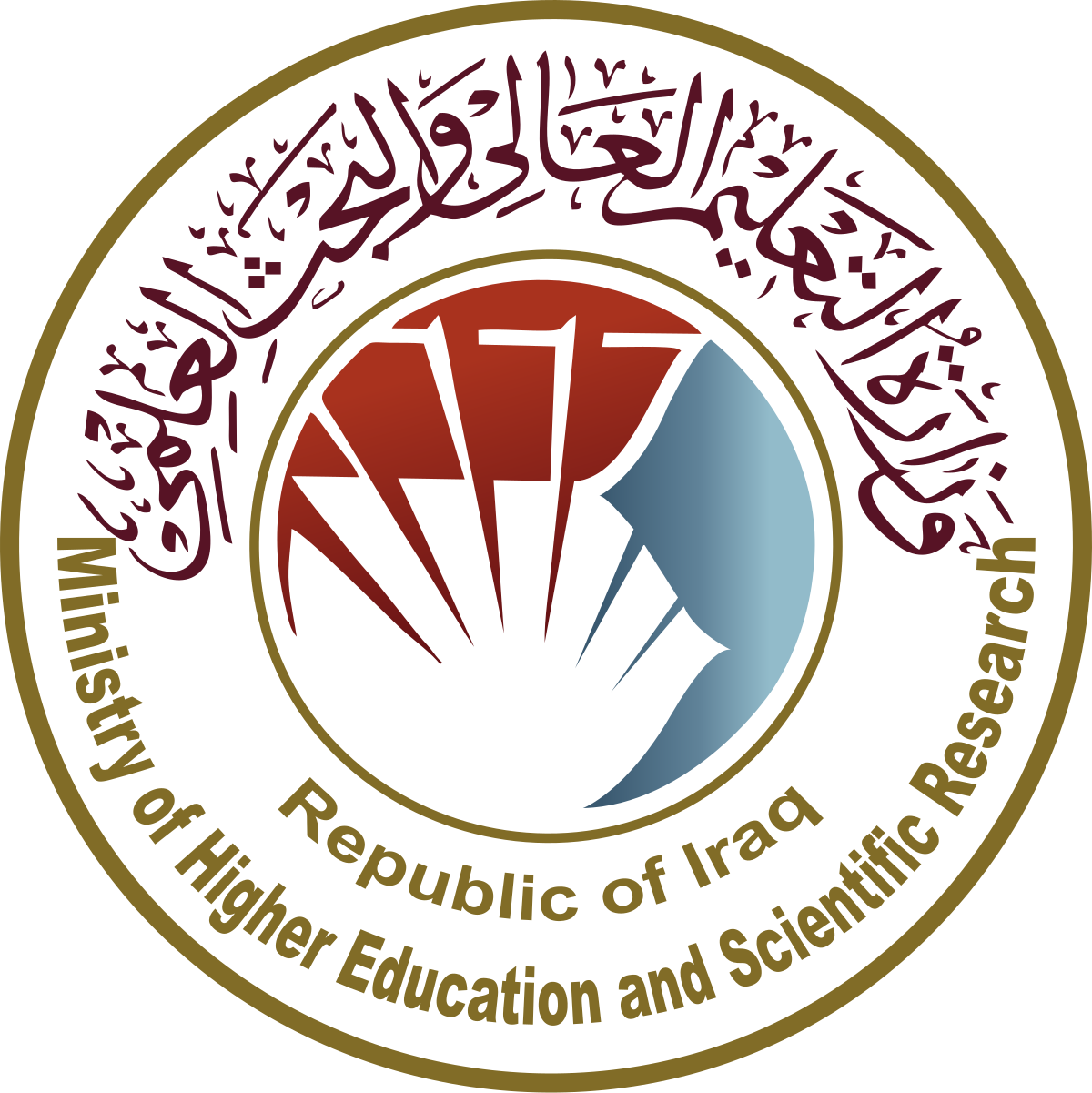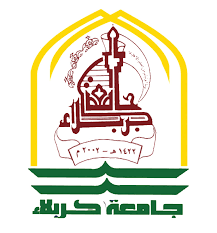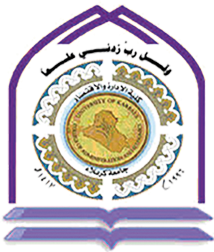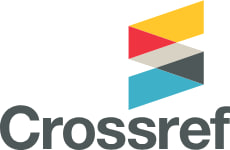تحديد اثر القوة والابداع في احداث التغيير التنظيمي
الكلمات المفتاحية:
القوة والابداع، التغيير التنظيميالملخص
يهدف هذا البحث إلى تحديد اثر القوة التنظيمية والإبداع التنظيمي في إحداث التغيير التنظيمي، ومن اجل تحقيق ذلك، تم التعبير عن القوة بأبعاد (القوة الشرعية، قوة المعلومات، قوة الخبرة، قوة الارتباط، والقوة المرجعية) استنادا إلى (۱۹۸۹) Rahim ١٩٨٤ ,Kenny & Wilson)، وعن الإبداع بأبعاد القدرة على حل المشاكل واتخاذ القرار، القدرة على التغيير، روح المجازفة، وتشجيع الإبداع) استنادا إلى (۱۹۸۲ Ettlic & Okeefe)، فيما تم التعبير عن التغيير التنظيمي بأبعاد تغيير التكنولوجيا، المنتج والخدمة الاستراتيجية والهيكل، والثقافة استنادا إلى (۲۰۰۱,Daft )
تم الحصول على المعلومات الميدانية اللازمة لإنجاز البحث من خلال استمارة استبانة أعدت لهذا الغرض وزعت على عينة من مديري دوائر محافظة كربلاء يمثلون القيادات الإدارية فيها.
وتوصل البحث إلى عدد من الاستنتاجات منها:
• إثبات الفرضية الرئيسية الأولى والتي تنص على وجود علاقات ارتباط معنوية بين متغيرات البحث بنسبة (۸۲,۱).
• إثبات الفرضية الرئيسية الثانية والتي تنص على تأثير القوة والإبداع في التغيير التنظيمي بنسبة (٦٦,٧%).
وختم البحث، بعدد من التوصيات منها:
• الاهتمام بالقوة التنظيمية والإبداع التنظيمي بوصفها عوامل مؤثرة في إحداث التغيير التنظيمي من خلال تغيير التكنولوجيا المستخدمة ،المنتجات والخدمات الاستراتيجية والهيكل، والثقافة.
• الدعوة إلى دراسة متغيرات أخرى تؤثر في التغيير التنظيمي ولم تدخل في نطاق البحث الحالي.
• اختبار أنموذج البحث في دوائر محافظات عراقية أخرى أو منظمات أخرى من اجل تدعيم نتائج البحث وتعميمها.
التنزيلات
منشور
كيفية الاقتباس
إصدار
القسم
الرخصة
الحقوق الفكرية (c) 2006 عباس حسين الحميري ، اكرم محسن مهدي الياسري

هذا العمل مرخص بموجب Creative Commons Attribution-NonCommercial-NoDerivatives 4.0 International License.
يحتفظ المؤلفون بحقوق الطبع والنشر لأوراقهم دون قيود.

